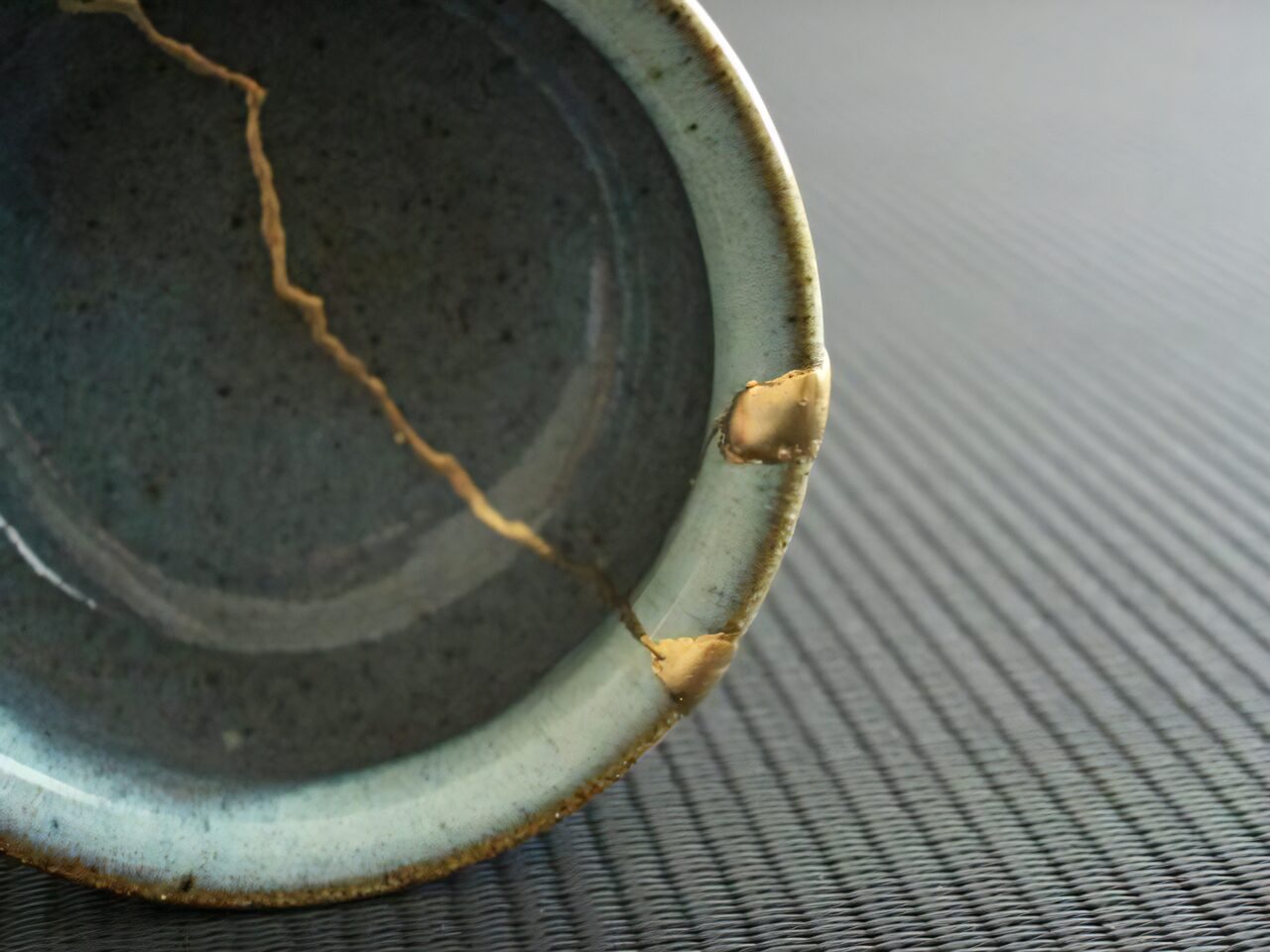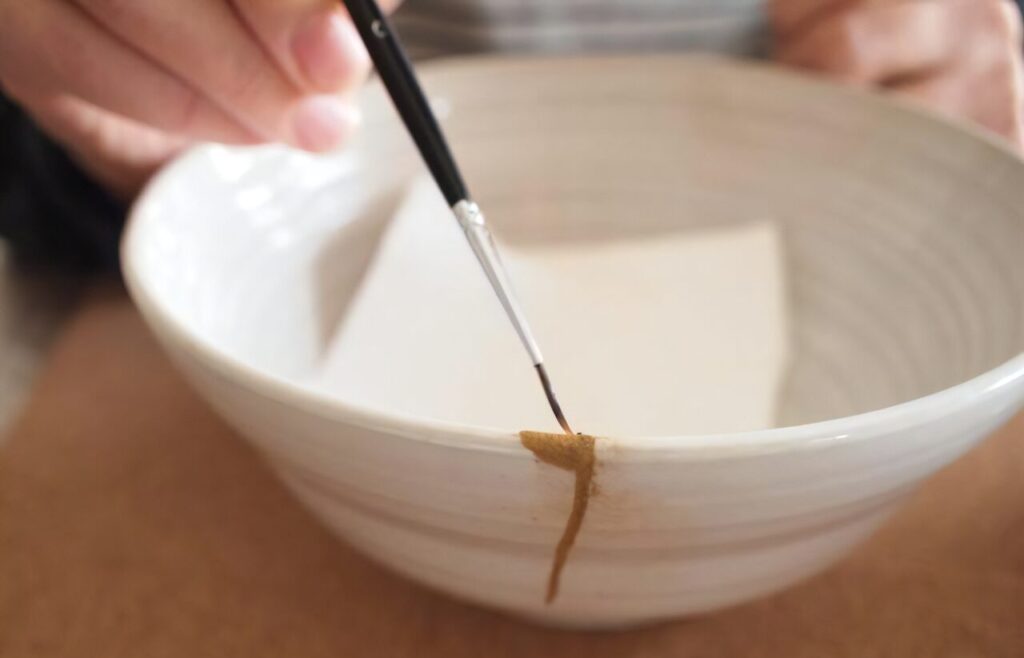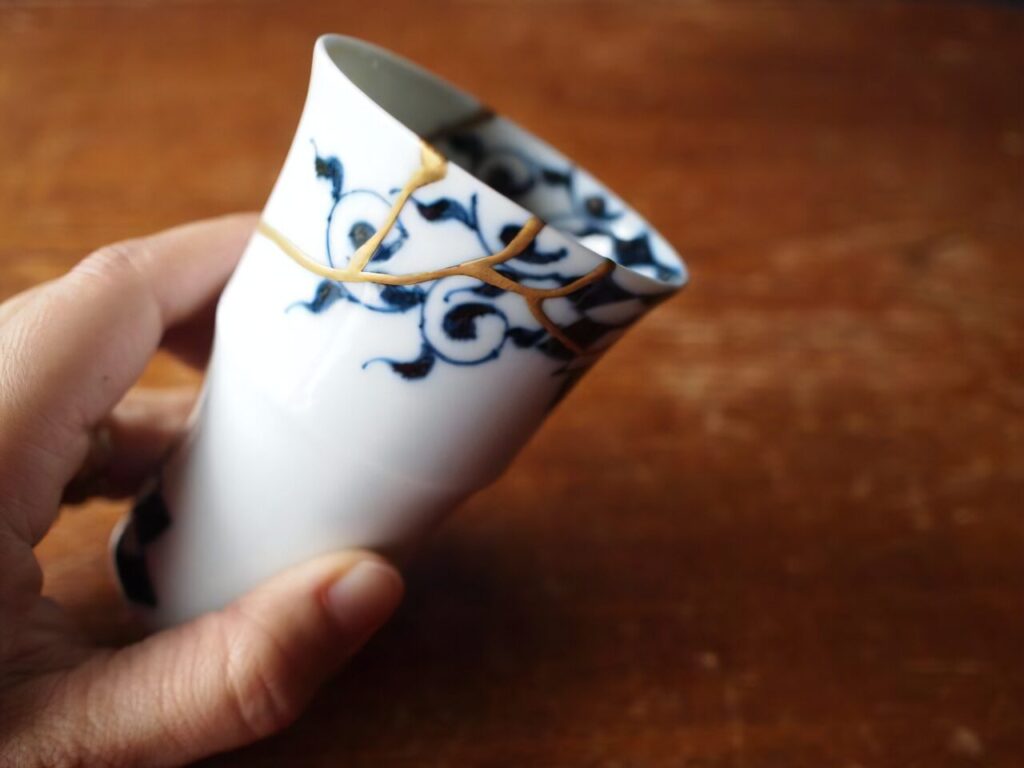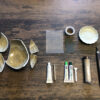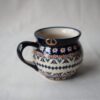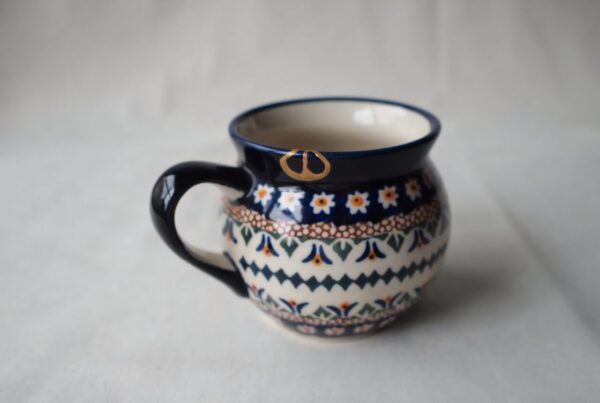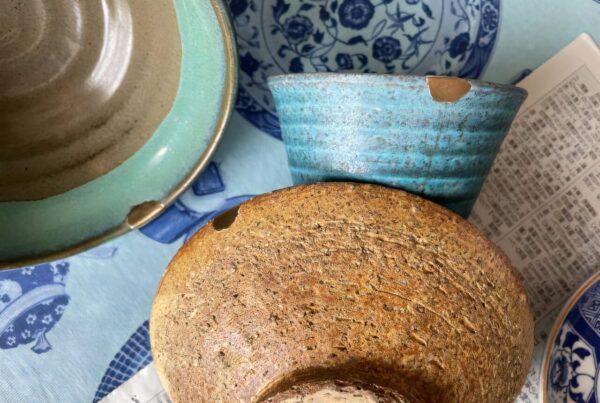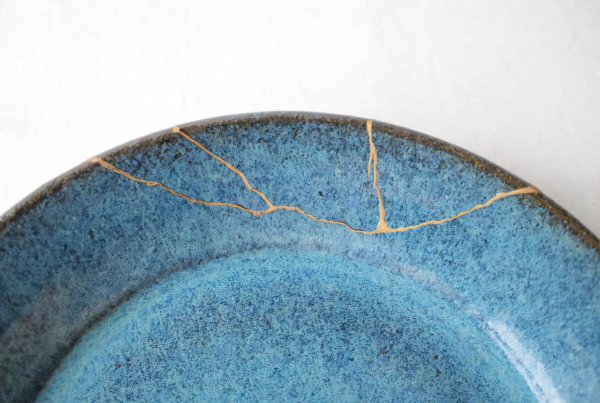Kintsugi, the traditional Japanese art of repairing broken pottery with lacquer mixed with powdered gold, silver, or platinum, is more than just a technique for fixing objects—it’s a philosophy for life.
This article delves into the myriad benefits of kintsugi, exploring how this practice can offer psychological, philosophical, and social advantages. By embracing the imperfections and scars of life, kintsugi teaches us to find beauty in the flawed or imperfect, providing a profound metaphor for healing and resilience.
Psychological Benefits
The Serenity of the Process
The practice of kintsugi, with its slow and deliberate methodology, offers a tranquil respite from the fast-paced rhythms of modern life. This ancient art demands a level of presence and mindfulness that is akin to meditative practices, drawing practitioners into a state of deep focus and calm. As one engages with the fine details of repairing broken pottery, external worries and distractions fade away, allowing for a rare moment of peace. The rhythmic nature of applying the lacquer and the contemplative silence that accompanies this process can significantly reduce stress levels, promoting mental well-being and emotional balance.
The Joy of Renewal
Kintsugi not only repairs but also reimagines the broken, teaching us the joy of breathing new life into what was once considered damaged beyond repair. This transformation, from brokenness to beauty, mirrors the human capacity for resilience and recovery. The satisfaction derived from this act of renewal goes beyond the aesthetic enhancement of objects. It touches on deeper themes of redemption and rebirth, resonating with our innate desire for healing and renewal. Witnessing the tangible results of one’s efforts to mend and beautify brings a profound sense of achievement and happiness, reinforcing the notion that brokenness is not an end but a beginning of a new story.
Unleashing Creativity
Faced with the challenge of seamlessly integrating gold veins into shattered pottery, practitioners of kintsugi must tap into their creative reserves. This process is not merely about restoration but about re-creation, requiring innovative thinking and artistic flair. Each crack and break presents a unique puzzle, encouraging individuals to think outside the box and devise custom solutions that highlight rather than hide the imperfections. This creative engagement stimulates the brain, fostering cognitive flexibility and enhancing problem-solving skills. The act of creatively mending promotes a mindset that values possibilities and perspectives, encouraging practitioners to apply this creative thinking to broader life challenges.
Cultivating Patience and Perseverance
In an age of instant gratification, kintsugi offers a counter-narrative that champions the virtues of patience and perseverance. The meticulous process, which can take weeks or even months to complete, teaches the value of slow, steady effort and the importance of persistence in the face of challenges. This cultivation of patience and determination is invaluable, translating into a more measured and resilient approach to life’s inevitable ups and downs.
Philosophical Benefits
Embracing Wabi-Sabi
Kintsugi serves as a tangible expression of the wabi-sabi philosophy, an aesthetic principle rooted in the acceptance of transience and imperfection. By highlighting rather than concealing the cracks in broken pottery with gold or silver, kintsugi teaches us to find beauty in flaws and to appreciate the unique story each repair tells. This perspective challenges the prevailing cultural norms that often value perfection and newness, advocating instead for a deeper appreciation of objects and experiences that reflect the natural cycle of life. The practice encourages a philosophical shift in how we perceive our surroundings and ourselves, fostering a sense of serenity and contentment in the face of impermanence. By adopting the wabi-sabi lens, practitioners of kintsugi learn to value the marks of wear and tear as symbols of resilience and history, enriching their understanding of beauty and the essence of life.
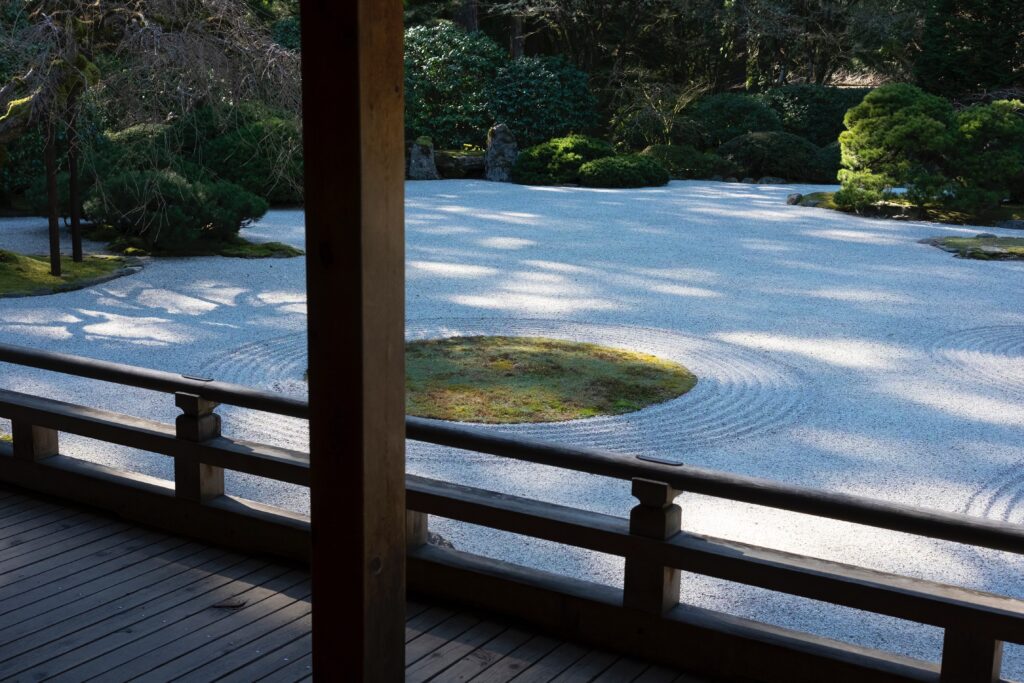
The Spirit of Mottainai
The concept of mottainai, which conveys a sense of regret over waste, is deeply interwoven with the practice of kintsugi. This philosophy encourages a respectful and thoughtful use of resources, urging us to see the value in what might easily be discarded or overlooked. Kintsugi exemplifies mottainai by demonstrating that with care and creativity, what is broken can be made whole and beautiful again. This approach to repair promotes an ethos of sustainability and conservation, reflecting a broader concern for the environment and our role within it. By embracing mottainai, individuals practicing kintsugi cultivate a mindset of gratitude and stewardship, recognizing the intrinsic value of objects and the importance of preserving them for future generations. This philosophical stance challenges the disposable culture prevalent in society, advocating for a more mindful and sustainable way of living.
A Reflection on Impermanence and Acceptance
Kintsugi philosophically invites us to reflect on the nature of existence and the inevitability of change. In repairing broken pottery, we are reminded of the impermanence that characterizes all aspects of life. This realization encourages a deeper acceptance of change and loss as natural and unavoidable elements of the human experience. Through the lens of kintsugi, imperfections and breakages become metaphors for the trials and tribulations we face, teaching us to embrace these experiences with grace and resilience. The golden scars of kintsugi symbolize the beauty of overcoming adversity, offering a powerful counter-narrative to the fear of failure and the stigma associated with brokenness. By valuing the repaired over the pristine, kintsugi provides a philosophical framework for understanding growth, healing, and the transformative power of embracing life’s imperfections.
Social Benefits
Broadening Horizons through Community Engagement
The practice of kintsugi offers unique social benefits by connecting individuals through shared interest and mutual respect for the art form. Engaging in kintsugi workshops or joining online communities and forums dedicated to this craft provides a platform for cultural exchange and learning. These social settings foster a sense of belonging and camaraderie among participants, who are drawn together by their common appreciation for the beauty in imperfection. Through interactions with fellow enthusiasts, individuals are exposed to diverse perspectives and stories, enriching their understanding of kintsugi and its underlying philosophies. This communal aspect of kintsugi encourages open dialogue and collaboration, allowing for the exchange of techniques, ideas, and personal experiences. As members share their journeys of repair and restoration, they build meaningful connections that transcend the boundaries of the art form, contributing to a supportive and inclusive community.
Promoting Cultural Appreciation and Preservation
Participation in the kintsugi community not only facilitates personal connections but also plays a role in cultural appreciation and preservation. Kintsugi, with its roots deeply embedded in Japanese tradition, offers a gateway for individuals from different backgrounds to explore and appreciate a rich cultural heritage. By learning about kintsugi, people gain insight into Japanese philosophies, aesthetics, and ways of living, which fosters greater cultural understanding and respect. This cross-cultural exchange enriches participants’ lives, broadening their worldview and promoting a greater appreciation for the diversity of human expression. Moreover, the practice of kintsugi underscores the importance of preserving traditional crafts and techniques, highlighting the role of art and craftsmanship in maintaining cultural identity and heritage.
Conclusion
Our look into kintsugi, the ancient art of fixing broken pottery, shows it can do a lot for our minds, how we see the world, and how we connect with others. By putting pieces back together, we find calm, get creative, and learn to love the flaws as what makes us unique and strong. Kintsugi makes us think about life’s temporary and imperfect sides, teaching us to live more carefully and with more awareness. It also brings people closer, allowing us to share our stories and understand each other better.
Kintsugi is more than just fixing things; it’s a lesson in life, showing us to see the beauty in our struggles, value in repairs, and strength in overcoming. It tells us that our scars are proof of our courage and growth. The benefits of kintsugi can touch every part of our lives, teaching patience, acceptance, and how to change for the better.
We encourage you to try kintsugi yourself. It’s not just about mending broken items; it’s a journey of self-exploration and connecting with others. Starting this journey can bring a richer sense of peace, creativity, and togetherness to your life, showing the importance of accepting flaws and finding beauty in making things whole again. Why not take that first step today and discover where this beautiful art of fixing can take you?

